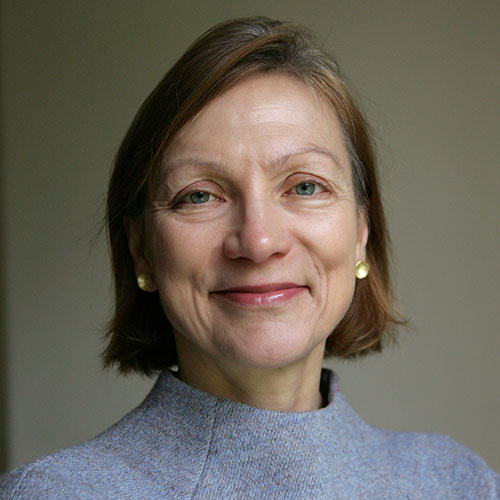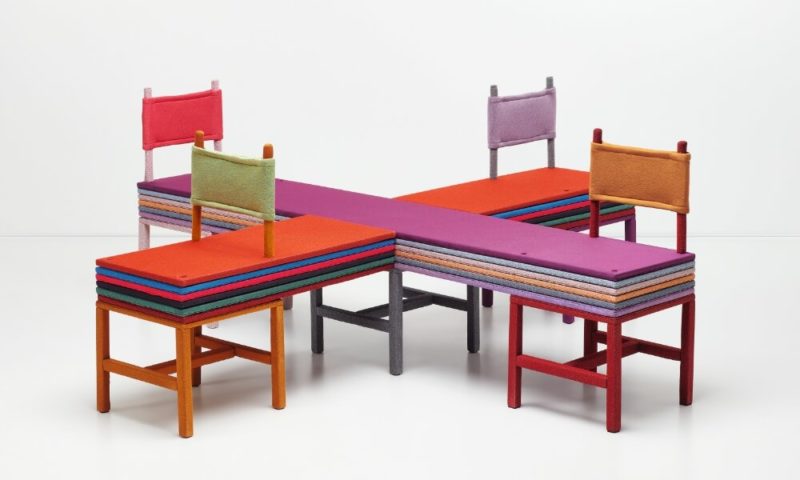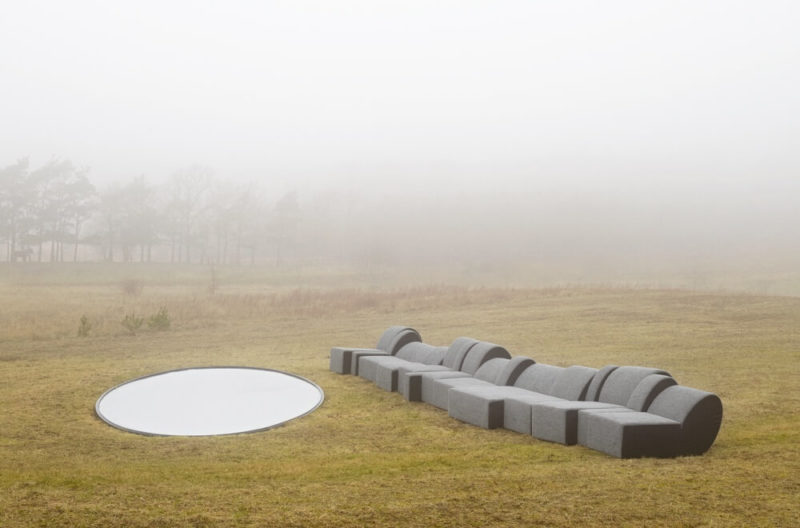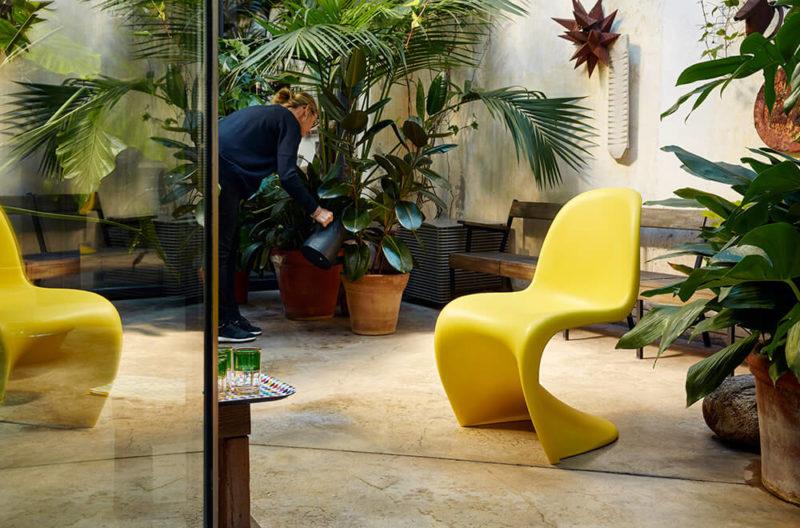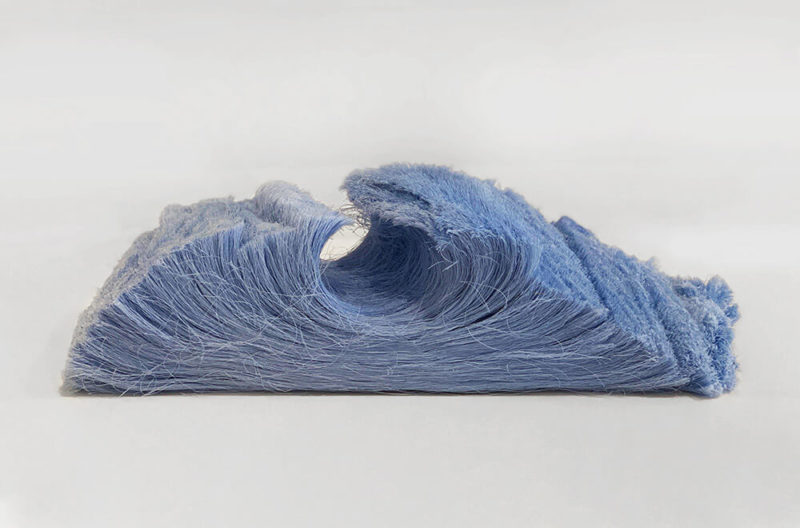Anders Byriel: Kvadrat
A patron of contemporary art and design.
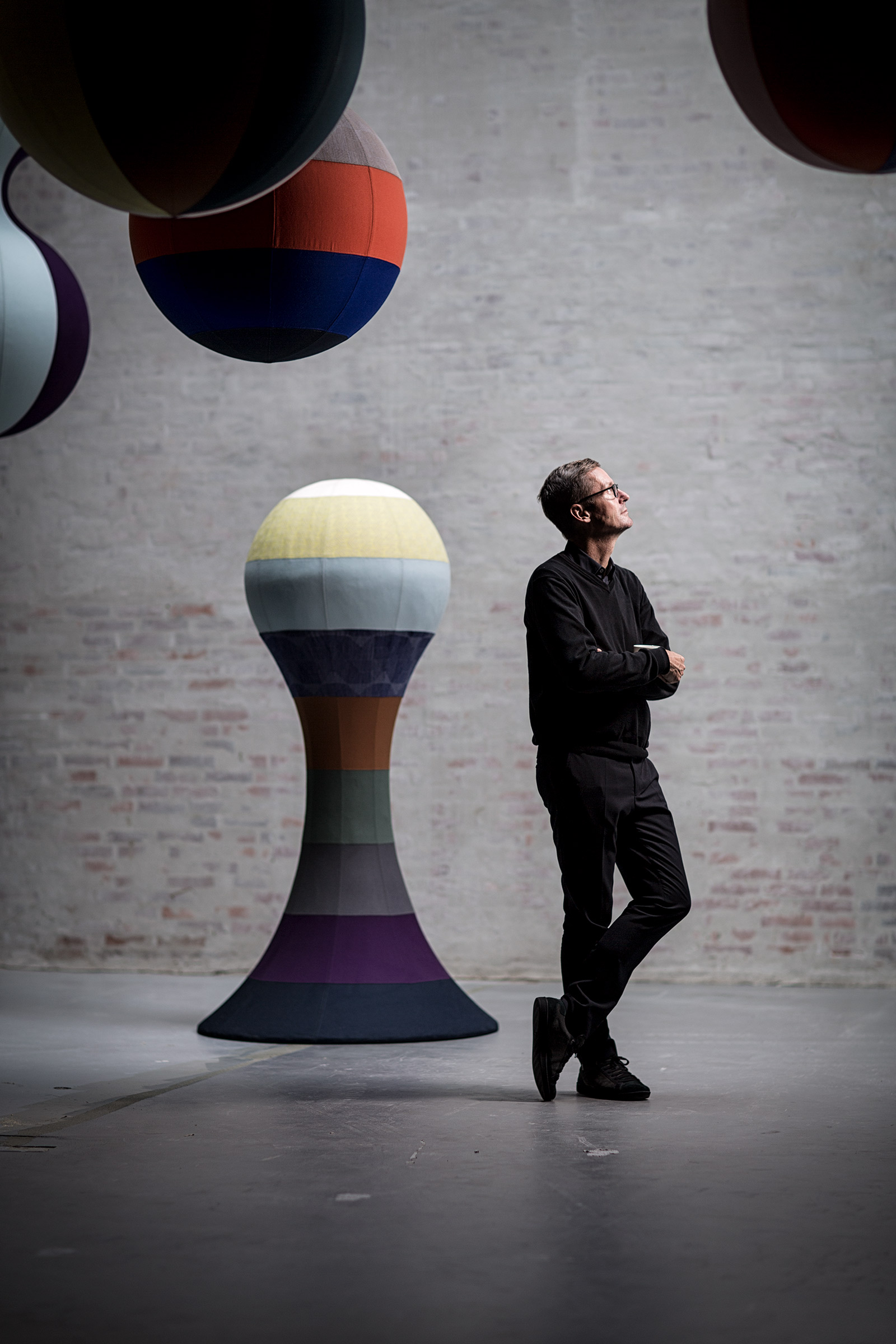
Anders Byriel
COURTESY: Kvadrat / PHOTOGRAPH: Giuliano Koren
ANDERS BYRIEL IS CEO of Kvadrat, one of the world’s leading manufacturers of high-quality textiles. His father, Poul Byriel, founded the company in 1968, in Ebeltoft, Denmark, in partnership with Erling Rasmussen. The word, “kvadrat” means simply, “square”, the primary design unit of all textiles.
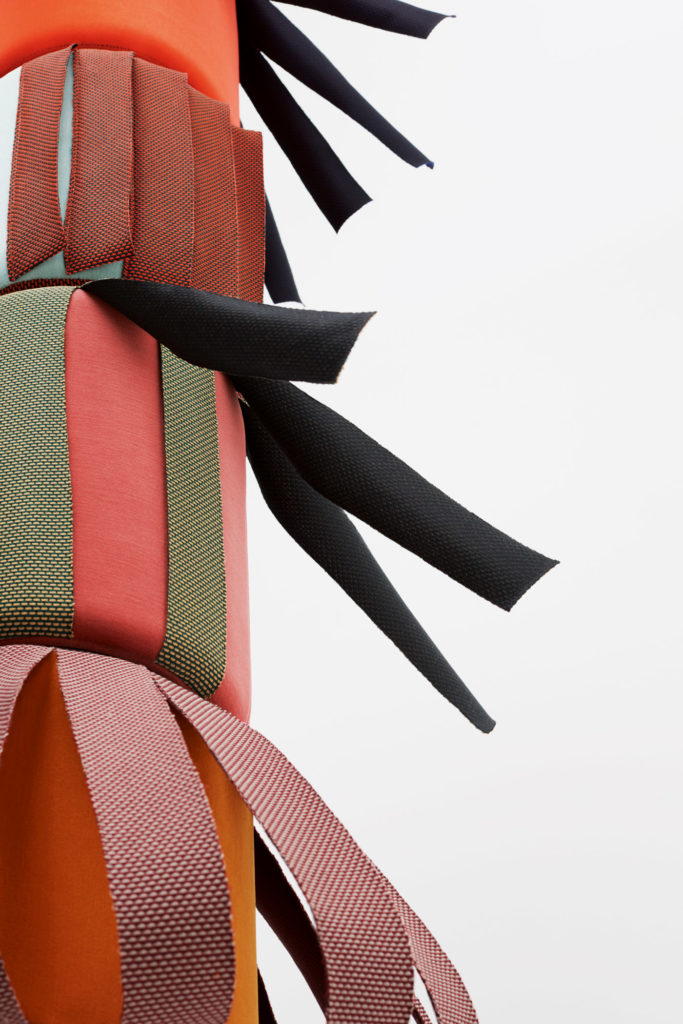
Objects of Common Interest, ‘Doric Columns Kinetic Object’, 2020, Knit! (detail)
COURTESY: Kvadrat / PHOTOGRAPH: © Luke Evans
Right from the start, the company worked closely with designers, collaborating with leading figures like Nanna Ditzel and Gunnar Aagaard Andersen to create a portfolio of contemporary textiles and related products for both private and public spaces. Ditzel’s woollen upholstery fabric ‘Hallingdal 65’, is known all over Denmark – ubiquitous in private homes, hospitals, airports and on the Danish National Railways – while Kvadrat fabrics also feature in prominent international architectural developments such as the Swiss Re in London; the Museum of Modern Art in New York; the Berlin Reichstag and the Guangzhou Opera House in China.
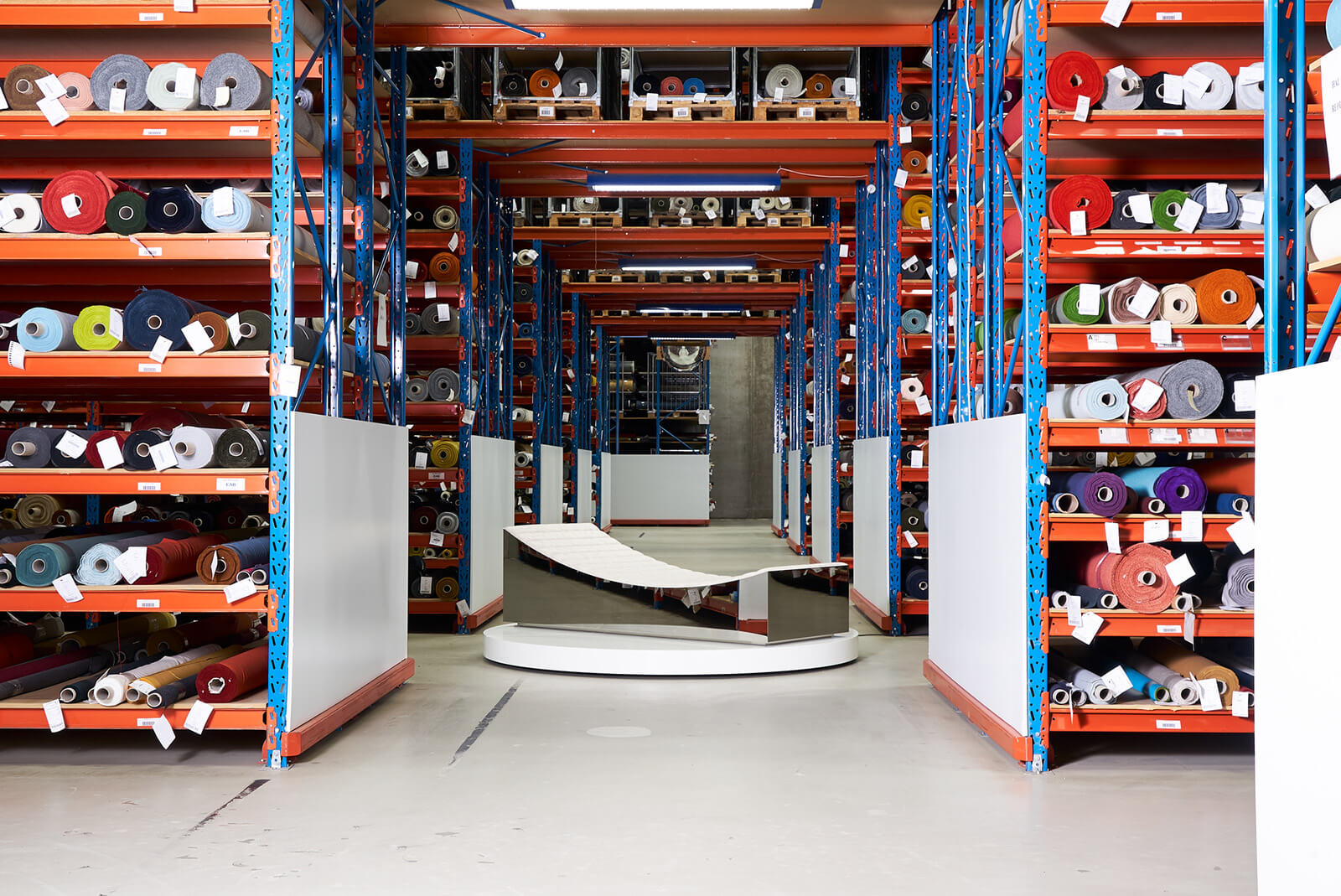
Kvadrat headquarters, Ebeltoft
COURTESY: Kvadrat / PHOTOGRAPH: © Benjamin Lund
The company’s watchwords are “simplicity, colour and innovation”, and it is their excitement about pushing the aesthetic and technological potential of textiles that has led them to collaborate with a whole roster of leading designers, architects and artists, including Alfredo Häberli, Peter Saville, Akira Minagawa, Tord Boontje, David Adjaye, Patricia Urquiola, Olafur Eliasson, Max Lamb, Thomas Demand, and Ronan and Erwan Bouroullec.
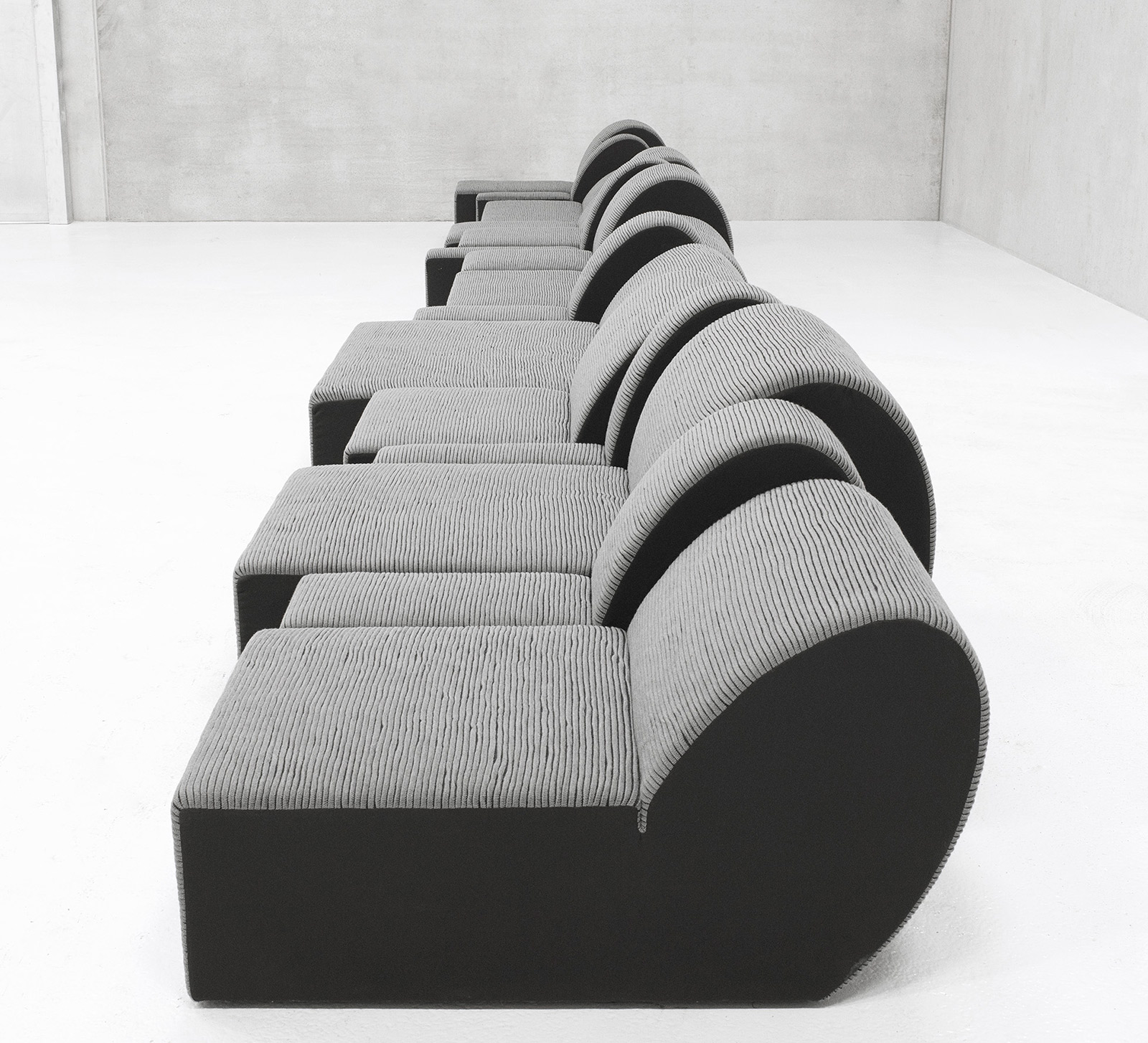
Olafur Eliasson and Kvadrat, Fog couch’, 2018
COURTESY: Olafur Eliasson and Kvadrat
Sometimes Kvadrat invites them to work adventurously with textiles, and sometimes it brings them in to contribute to the brand image of the company – for instance, the Bouroullec Brothers’ design of the new Kvadrat Copenhagen flagship showroom, and Peter Saville and David Adjaye’s collaboration for the London showroom.

Kvadrat, London showroom, Shoreditch
COURTESY: Kvadrat
The company’s latest exhibition of design collaborations, Knit!, is currently being presented at the company headquarters at Ebeltoft and in their Copenhagen showroom – as well as through an impressive online interactive exhibition. As the exhibition launched, The Design Edit took the opportunity to speak to Byriel about his interests in design.
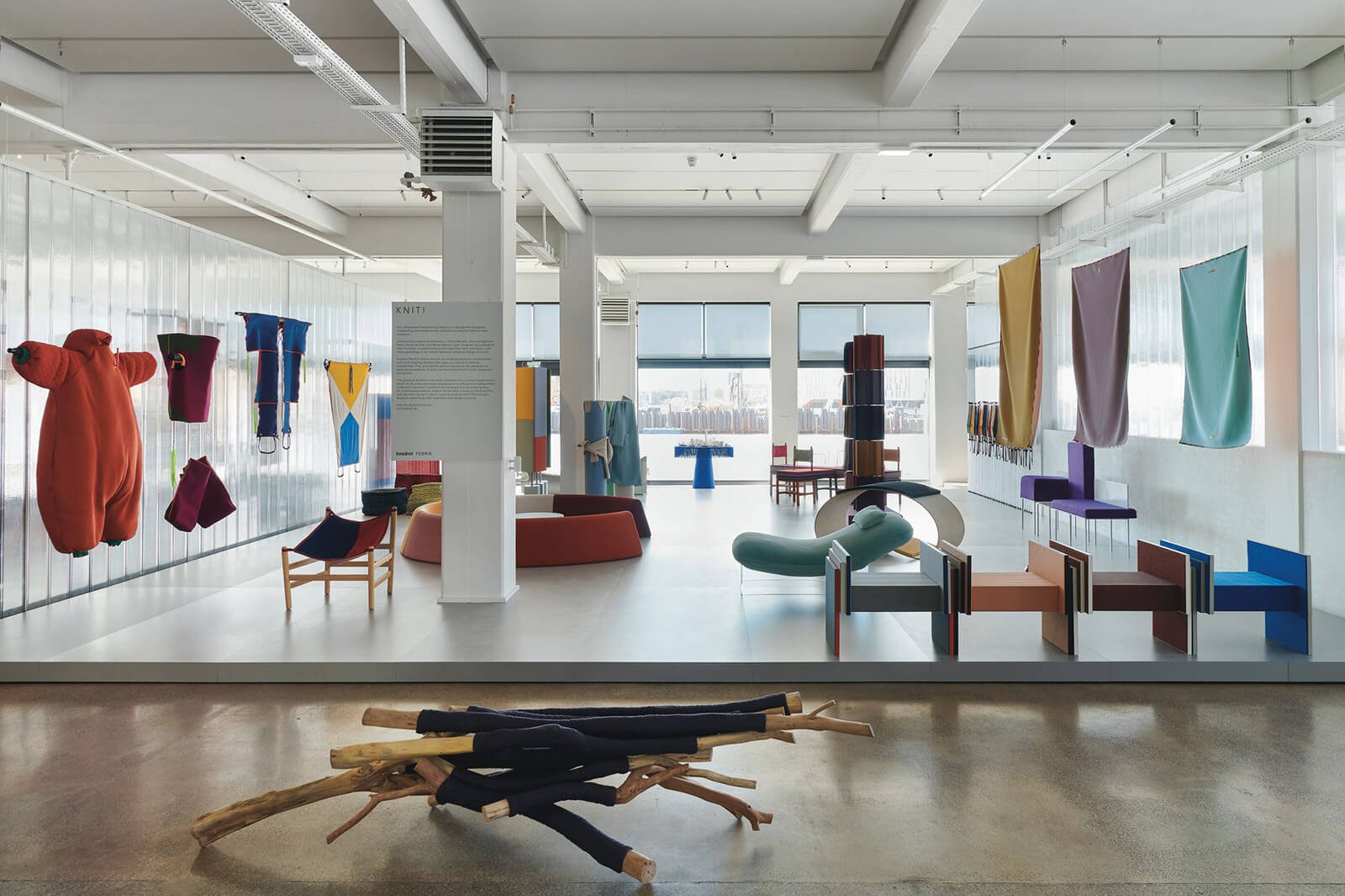
Installation view Knit! at the Copenhagen showroom
COURTESY: Kvadrat / PHOTOGRAPH: © Benjamin Lund
The Design Edit (TDE): What was your own background in design?
Anders Byriel: Kvadrat was born in 1968, just after the heyday of Danish midcentury modern design. My father and Erling Rasmussen were young people. They saw the 1950s and 1960s as very beige and very quiet. They wanted more freedom, more colour, more expression. So we were born as a modern and contemporary design company, influenced by Pop Art but also very deeply connected to architecture, and that is the culture I grew up in.
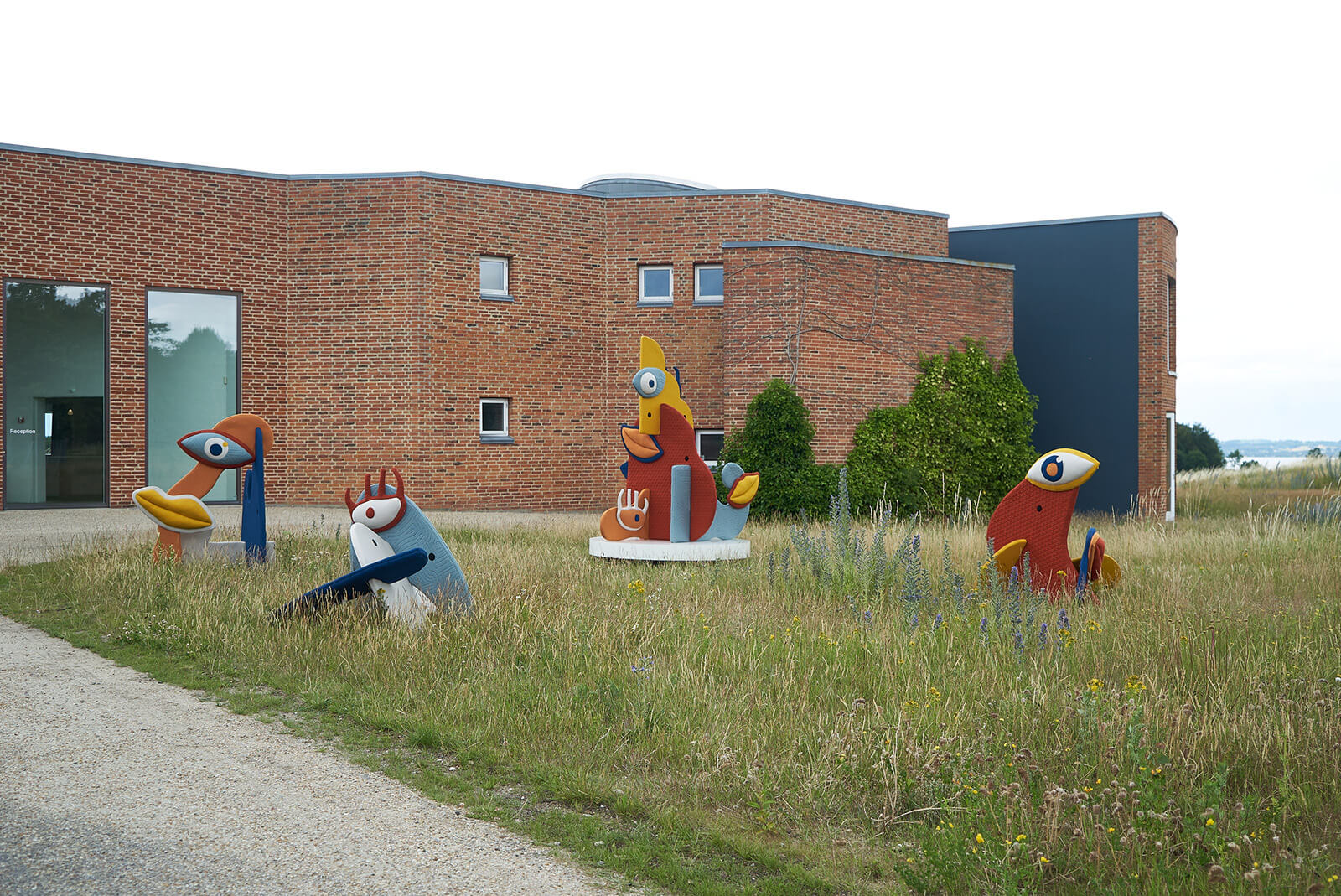
Benja Harney, ‘InterPersona’, 2020 at the Kvadrat headquarters, Ebeltoft
COURTESY: Kvadrat / PHOTOGRAPH: © Benjamin Lund
TDE: What role can textiles play in contemporary design – especially within modernist architecture and interior design, where they can sometimes seem redundant?
Anders Byriel: As you see, modern and contemporary architecture have conquered the world. But in the last ten years or so people have realised that spaces must also be liveable. Textiles offer great tactility and also create a great acoustic. You can completely change a space with textiles, wrap it up, so it becomes like a cocoon or a nest. This awareness has become stronger in private homes and chic hotels and, due to the pandemic, we see this idea entering the workplace. Taking care of people and looking after their well-being has become a priority.
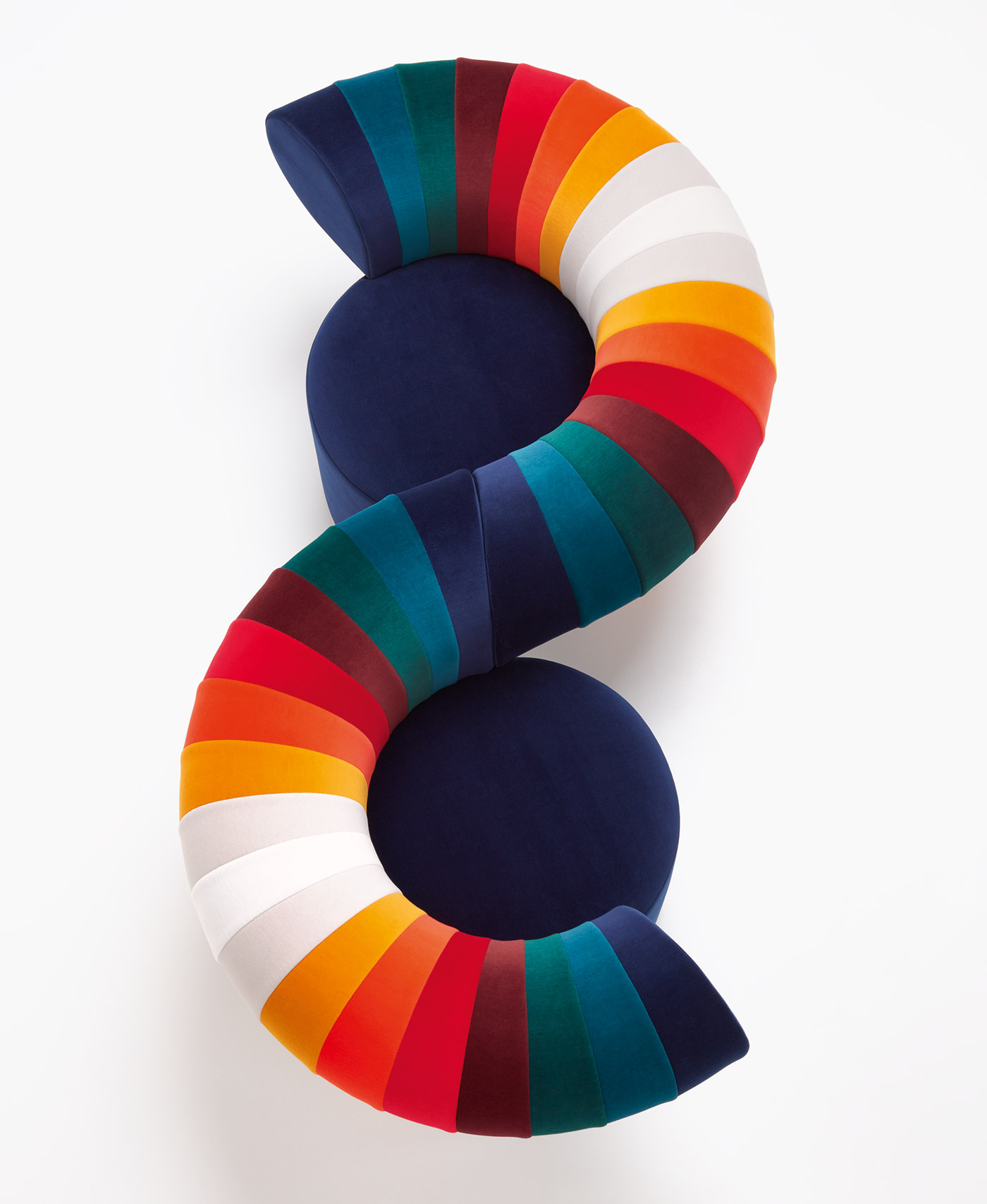
Adam Goodrum, ‘Conversation Series’, 2020, Knit!
COURTESY: Kvadrat / PHOTOGRAPH: © Luke Evans
“The founders of Kvadrat saw the 1950s and 1960s as very beige and very quiet. They wanted more freedom, more colour, more expression …”
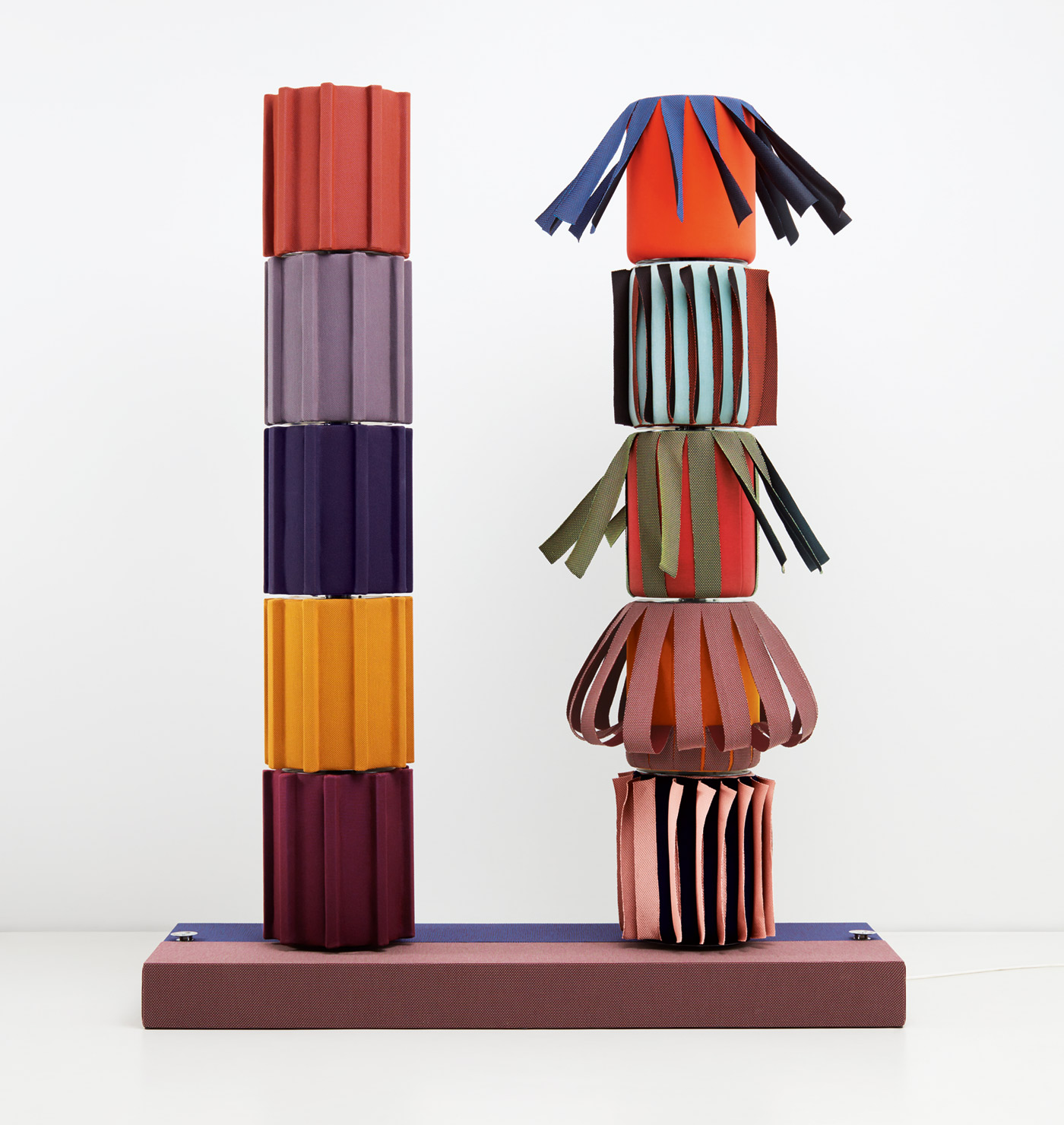
Objects of Common Interest, ‘Doric Columns Kinetic Object’, 2020, Knit!
COURTESY: Kvadrat / PHOTOGRAPH: © Luke Evans
“… so Kvadrat was born as a modern and contemporary design company, influenced by Pop Art but also very deeply connected to architecture”
TDE: Tell us about your collaborations with artists and designers?
Anders Byriel: Artists showed the way. We have worked with many contemporary artists – including Thomas Demand and Olafur Eliasson – running three projects a year. But we have also been doing design projects. Knit! is our fourth. We invited five curators to choose people on their way up – so each curator brings in new talent. We have consciously tried to reach out beyond our base in the US, Europe and Japan and to select designers on the cusp of industrial design and craft.
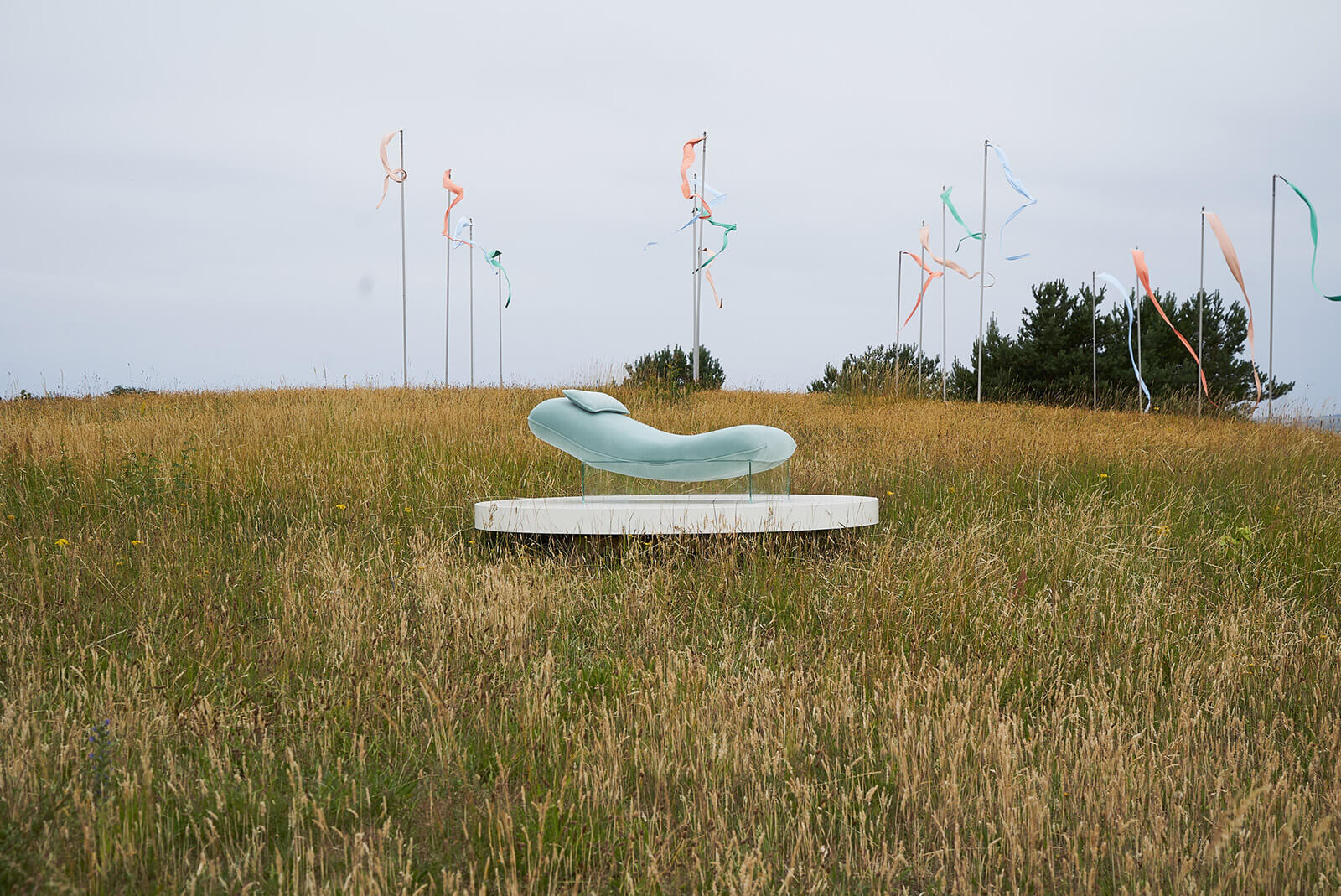
Studio Truly Truly, ‘Coalesce’, 2020 at the Kvadrat headquarters, Ebeltoft
COURTESY: Kvadrat / PHOTOGRAPH: © Benjamin Lund
It is always energising to meet and work with new talents, to hear their different stories. I love the story for instance of Faysal Tabbarah [educator, architect and co-founder of Architecture + Other Things, an experimental studio based in UAE] driving through the desert to find the branches for his ‘A Softly Winded Chair’.

Faysal Tabarrah, ‘A Softly Winded Chair’, 2020, Knit!
COURTESY: Kvadrat / PHOTOGRAPH: © Luke Evans
These young and mid-career designers inspire us and they inspire our community. We have forty display rooms around the world so we can introduce these designers to different audiences, and pay back the design community who created Kvadrat. For the food chain is quite fragile with young designers.
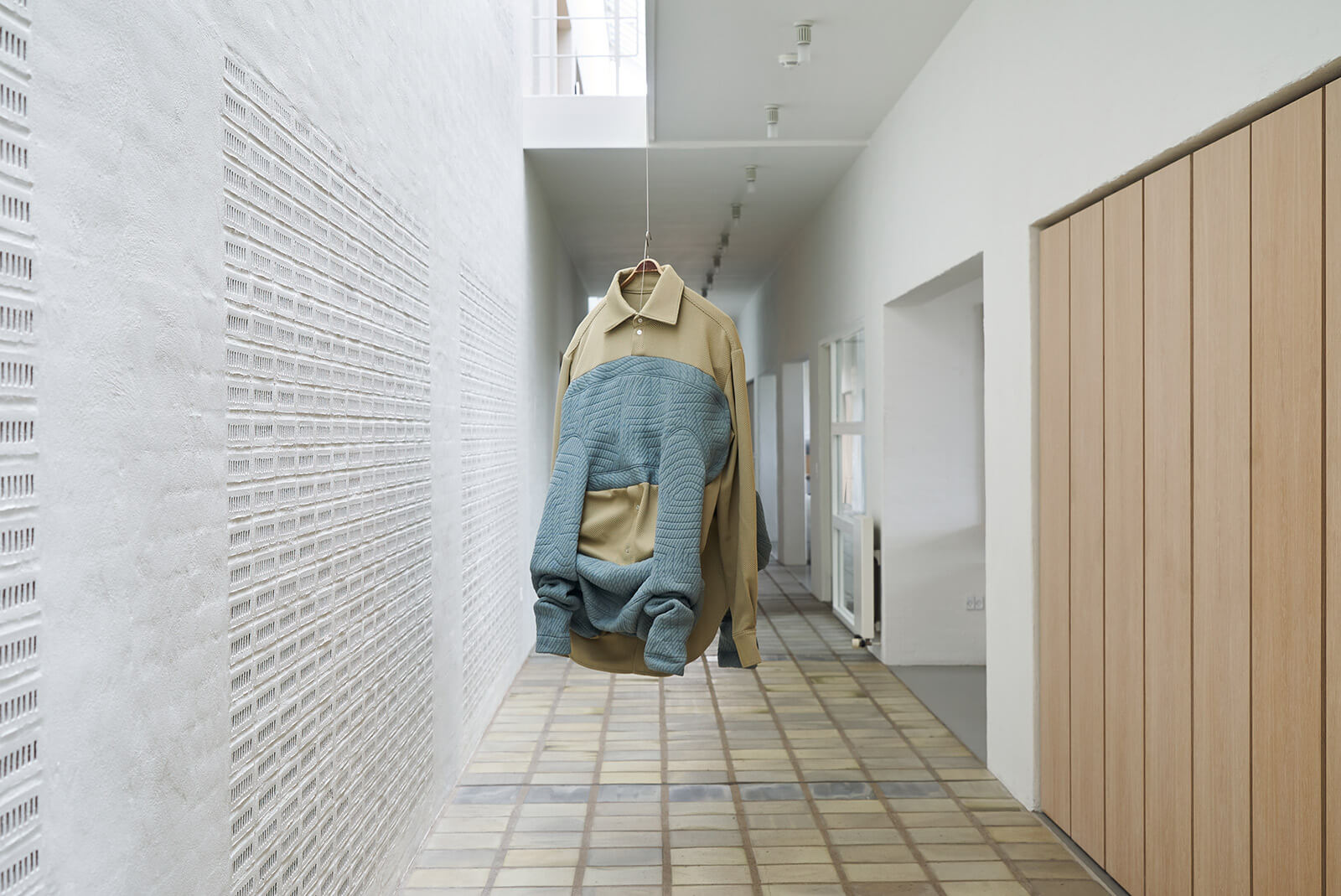
Marie Sloth Rousing, ‘Dressed Up’, 2020 at the Kvadrat headquarters, Ebeltoft
COURTESY: Kvadrat / PHOTOGRAPH: © Benjamin Lund
Looking at these objects, they would never go into a manufacturing process for mass production – the Malmö Upcycling Service’s ‘Knit Together’, for instance, [‘Knit Together’ is a room divider made from thick ribbons of blue Razzle Dazzle textiles connecting Really Solid Textile Boards – a solid sheet material made from compressing end-of-life textiles] or the Bahraini-Danish collaboration, ‘Blue Velvet Colonnade’, which reflects a distinctive view of society. But these projects are designed to encourage free-thinking, to encourage us to follow our imagination. In 2021/2022 we are plan to do things more imaginatively and exploratively, even on our product side.
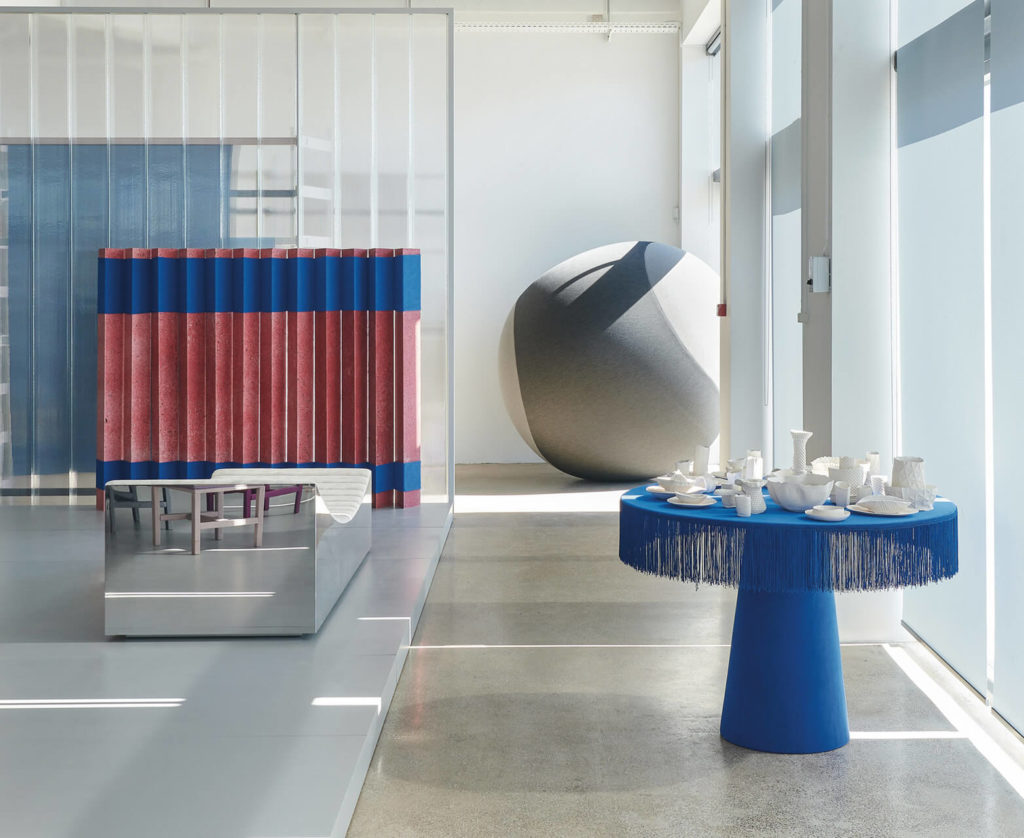
Installation view Knit! at the Copenhagen showroom, with Malmö Upcycling Service’s ‘Knit Together’, 2020 (left)
COURTESY: Kvadrat / PHOTOGRAPH: © Benjamin Lund
TDE: You have pursued a number of projects exploring textiles and the circular economy – including a collaboration with Max Lamb to find ways of using the Kvadrat product, Really Solid Textile Board. What role do you feel Kvadrat can play in encouraging a sustainable approach to design?
Anders Byriel: We are very keen on the circular economy – our entire R&D is focused on sustainability. In fact, interior textile waste is a relatively small footprint, but we are helping fashion houses and sports brands worldwide by taking the waste they cannot recycle and making a hardboard material.
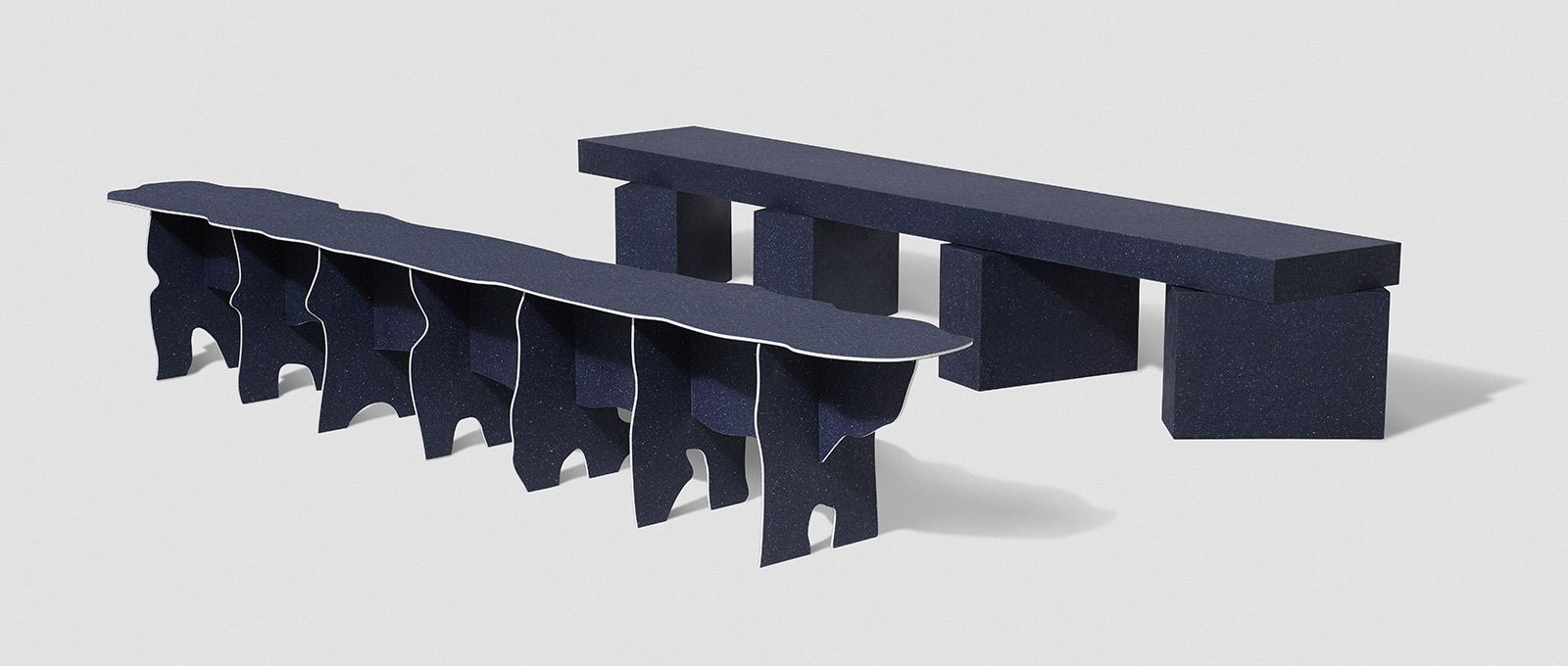
Max Lamb for Really, ‘Benches’, 2017
COURTESY: Kvadrat
But when you do up-cycling and work with waste, you need to create beauty, because beauty is also what we are about. So when you see the piece that Paola Sakr created from ceramics and textile – it is unbelievable, the beauty and the visual exploration. Or look at Objects of Common Interest, and see how they have brought their own heritage and background to the project.
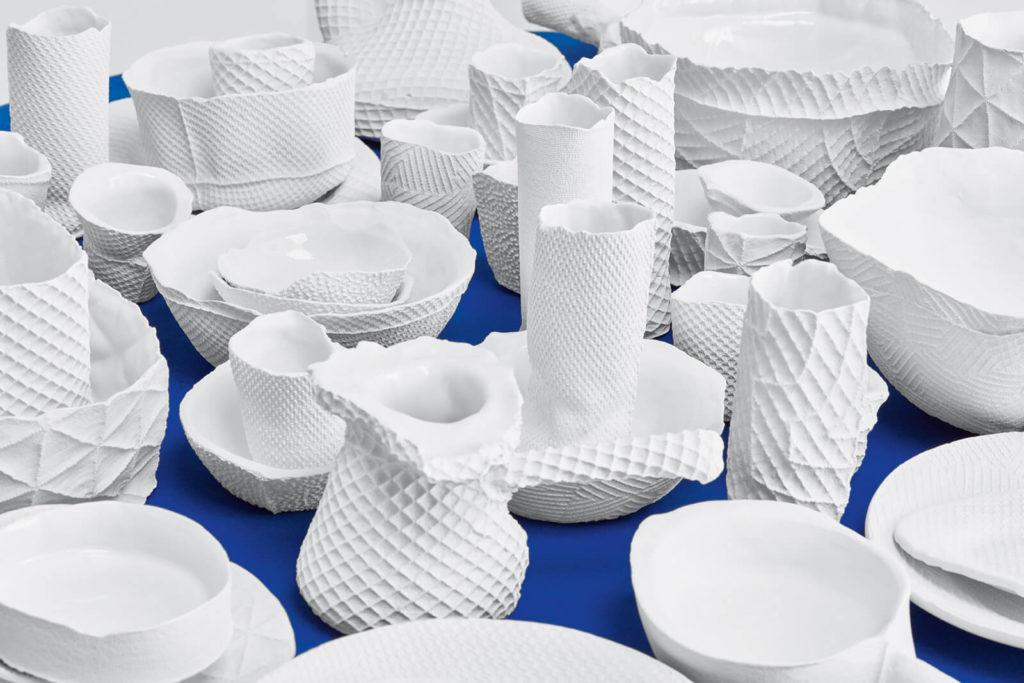
Paola Sakr, ‘Sundays’, 2020
COURTESY: Kvadrat / PHOTOGRAPH: © Luke Evans
TDE: What is your own, personal interest in contemporary designers and contemporary collectible design?
Anders Byriel: This is a relatively new interest for me, design objects. Until now, I have been a hardcore contemporary art collector – but I just bought a daybed in teak by Grete Jalk, and I am very excited about that. I am working my way from these vintage pieces into unique, contemporary pieces. It is the next natural step from being embedded in contemporary art. Maybe the last part of collecting is to see what designers can do. We have the prototypes for the ‘Aim’ light, later manufactured by FLOS, the unique, highly-crafted ‘Lianes’ which were created by the Bouroullec Brothers in 2010. Since then, I have acquired a number of pieces by the Bouroullec Brothers for my home.
Objects of Common Interest building their prototype of ‘Doric Columns’ in Thessaloniki, Greece.
COURTESY: Kvadrat
Knit! is a series of work by 28 different designers exploring the potential of knitted textiles by Kvadrat Febrik.
